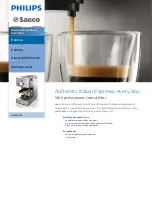
4
Engine Emissions - and CO Safety
Potential Effects of CO Exposure
• Work place/industry guidelines for CO exposure limits
• Definition of CO effects
Work place/industry guidelines for CO exposure limits
Limits for permissible exposure to CO vary substantially from region to region. City, State, and Industry
requirements should be consulted prior to use of any equipment. The current Occupational Safety and Health
Administration (OSHA) Permissible Exposure Limit (PEL) for CO is 50 ppm, as an 8-hour time weighted average
(TW A). This is computed by making measurements at intervals over 8 hours, then adding the sums of the
concentrations and the intervals, and dividing by 8 hours. For example:
Time
Interval
(Hours)
Parts Per Million
(PPM)
8:00 - 9:00
1
100
9:00 - 10:00
1
25
10:00 - 11:00
1
25
11:00 - 12:00
1
50
12:00 - 1:00
1
50
1:00 - 2:00
1
50
2:00 - 3:00
1
50
3:00 - 4:00
1
50
Total:
8 HR
400 PPM
Time Weight Average:
400 PPM / 8 HR = 50
The current National Institute for Occupational Health and Safety (NIOSH), immediately dangerous to life and health
concentration (IDLH) recommended level for CO is 1,200 ppm. NIOSH defines the IDLH exposure level as the
concentration that could result in irreversible health effects or death, or prevent escape. from the contaminated
environment within 30 minutes.
Definition of CO effects:
The toxic effects of carbon monoxide in the blood are the result of tissue hypoxia (lack of oxygen) carbon
monoxide combines with hemoglobin to form carboxyhemoglobin. Since CO and oxygen react with the same group
in the hemoglobin molecule, carboxyhemoglobin is incapable of carrying Oxygen. The affinity of hemoglobin for CO
is 200 to 240 times greater than for oxygen. The extent of saturation of hemoglobin with CO depends on the
concentration of the gas, the quantity of inspired air and on the time of exposure. The severity depends on the state
of activity of the individual and his tissue oxygen needs.
According to Harrison's Principles of Internal Medicine 7th edition, no symptoms will develop at a concentration
of 0.01 % CO (1OOppm) in inspired air, since this will not raise blood saturation above 10 %. Exposure to 0.05%
(500ppm) for 1 hour during light activity will produce a blood concentration of 20% carboxyhemoglobin and result in
a mild or throbbing headache. Greater activity or longer exposure causes a blood saturation of 30 to 50 %. At this
point head ache, irritability, confusion, dizziness, visual disturbance, nausea, vomiting, and fainting can be
experienced. Exposure for one hour to concentrations of 0.1 % (1000ppm) in inspired air the blood will contain 50 to
80% carboxyhemoglobin which results in coma, convulsions, respiratory failure and death. On inhalation of high
concentrations of CO, saturation of the blood proceeds so rapidly that unconsciousness may occur suddenly without
warning.
Summary of Contents for 19315
Page 2: ......
Page 20: ...Propane High Speed Burnisher ...
Page 22: ...24 24 Propane High Speed Burnisher ...
Page 24: ...Propane High Speed Burnisher ...
Page 26: ...Propane High Speed Burnisher ...
Page 28: ...Propane High Speed Burnisher ...
Page 30: ...Propane High Speed Burnisher ...
Page 32: ...Propane High Speed Burnisher ...
Page 34: ...Propane High Speed Burnisher ...
Page 36: ...Propane High Speed Burnisher ...
Page 38: ...Propane High Speed Burnisher ...
Page 40: ...Propane High Speed Burnisher ...
Page 42: ...Propane High Speed Burnisher ...
Page 44: ...Propane High Speed Burnisher ...
Page 46: ......
Page 47: ......
Page 48: ......






































